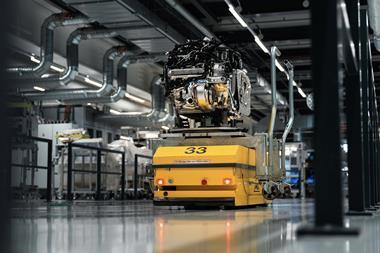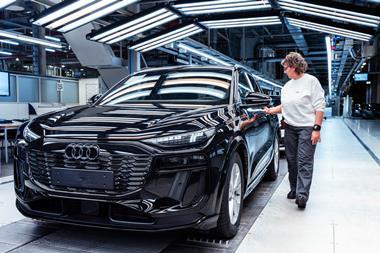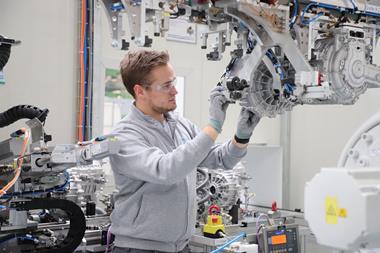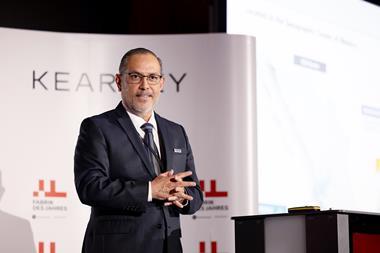
The boost in electric vehicles poses challenges for traditional manufacturing. ABB’s Michael Larsson explains how robotic automation can help solve them What are some of the latest key trends in the electric vehicle (EV) market?Technological advances coupled with regulatory pressures on internal combustion engine (ICE) vehicles are leading to promising signs for the EV market. Many incumbent manufacturers are rolling out models alongside new market entrants. And the interest in the Formula E Championship, sponsored by ABB, is another indication of the growing popularity of EVs. In terms of figures, in 2017 Norway was the pacesetter in Europe, which had about 500,000 EVs, China led the world in EV usage, with about 600,000 all-electric vehicles on its roads, and the US ranked third globally, with fewer than 500,000 EVs. China is also a world leader in supplying EVs – covering 43% of EV production worldwide in 2016 – and is investing heavily in the battery market.
What are some of the latest key trends in the electric vehicle (EV) market?Technological advances coupled with regulatory pressures on internal combustion engine (ICE) vehicles are leading to promising signs for the EV market. Many incumbent manufacturers are rolling out models alongside new market entrants. And the interest in the Formula E Championship, sponsored by ABB, is another indication of the growing popularity of EVs. In terms of figures, in 2017 Norway was the pacesetter in Europe, which had about 500,000 EVs, China led the world in EV usage, with about 600,000 all-electric vehicles on its roads, and the US ranked third globally, with fewer than 500,000 EVs. China is also a world leader in supplying EVs – covering 43% of EV production worldwide in 2016 – and is investing heavily in the battery market.
This surge in the EV market has been boosted by bans on ICE vehicles, as well as subsidies and purchase incentives. Currently, Norway and the Netherlands intend to phase out fossil fuel-powered automobiles by 2025, and the UK and France by 2040. India is targeting a 100% electric car fleet by 2030, China is looking at plans to ban the production and sale of diesel and petrol cars and vans, while California is also considering a ban. Meanwhile German cities have recently won the right to ban diesel cars. Having said that, the EV market is still small – in 2016 only about 0.2% of the global fleet were electric and hybrid passenger cars – and moving from early deployment to mass-market adoption could take the next two decades.
How does this translate to concrete changes in the automotive manufacturing industry?Both incumbent manufacturers and new entrants are now producing EV models, indicating that the industry is embracing the EV transformation. The challenge, however, is to ascertain how quickly they will need to ramp up and when exactly. Furthermore, incumbent producers face the question of whether to adapt ICE models or design a native EV platform, with new designs having to take into account the positioning and shape of the battery pack in particular. These challenges imply that new EV manufacturing processes need to be scalable and flexible, and that new processes will be required to make EVs with the same productivity and quality as traditional cars.
What are some of the unique challenges in EV versus traditional manufacturing?There are numerous changes in how EVs are manufactured compared to ICE vehicles. Probably the biggest change is to the car underbody. While these have been very similar in the past, more variations are now needed to accommodate increased EV motor and battery placement options, with the challenge being how feasible it is to accommodate these on one flexible car line. Such a line would also have to accommodate new joining methods, with spot welding being replaced by an increased use of self-piercing rivets, gluing/sealing, flow drilling and laser welding. In addition, battery cells will come in different configurations (e.g. cylindrical, pouch and prismatic), meaning battery packs need to have different shapes and sizes and may need a different shaped battery tray to accommodate them. In terms of batteries, safety is another major consideration. While the focus used to be on protecting the engine, this has now shifted to the battery. Furthermore, the batteries’ Thermal Interface Material (TIM) is very expensive – so accurate dispensing with less waste is critical – and abrasive (as it contains silica), which causes considerable wear on parts and also requires a careful dispensing method.
How can robotic automation help solve some of these challenges?Robots can be used in numerous new applications; let me give you some examples. In terms of the battery module, they can be employed for flexible and high-speed placement of cylindrical, pouch and prismatic cells, as well as for laser welding of busbars in a faster process that provides instant quality feedback. When it comes to the battery pack, they can support welded tray assembly – here ABB’s ModulFlex system, for example, provides precise, modular and scalable assembly and has extensive experience in body-in-white applications. Robots can also apply TIM onto cold plates, with ABB’s Integrated Dispensing Function Package (IDFP) offering high speed and high path accuracy. Additionally, robots can be used to connect the battery pack to high-voltage busbars, eliminating the need for human workers to be exposed to medium- and high-voltage currents. Finally, robot installation of magnets in e-motors is more flexible than a dedicated press fixture, which can only accommodate one size of motor, parts in certain angles, etc. ABB’s Integrated Force Control automates complex tasks and is suited to e-motor assembly. Furthermore, if changes are required within a manufacturer’s facilities, ABB can handle full installation and accommodate new production methods adapted to the EV market.
What key changes do you see in the coming years?Generally speaking, in terms of manufacturing, the coming years will bring a greater volume of cars and speed of production to facilitate the ramp-up to a larger future market. Where components are concerned, we will see increased charging power and battery pack voltage, and a higher number of form factors for battery packs. Aside from manufacturing, key issues concerning the EV infrastructure need to be addressed if this sector is to move to mass-market adoption. These include an improved charging infrastructure with reduced charging times, for which ABB offers a total solution from compact, high quality AC wallboxes, reliable DC fast charging stations with robust connectivity, to innovative on-demand electric bus charging systems. Further challenges for the future comprise a longer range for EVs, the phasing out of subsidies and incentives plus decreasing revenues collected from conventional fuel taxes, and an overall transition to clean energies such as hydropower as a means to “fuel” the budding EV transformation.
































